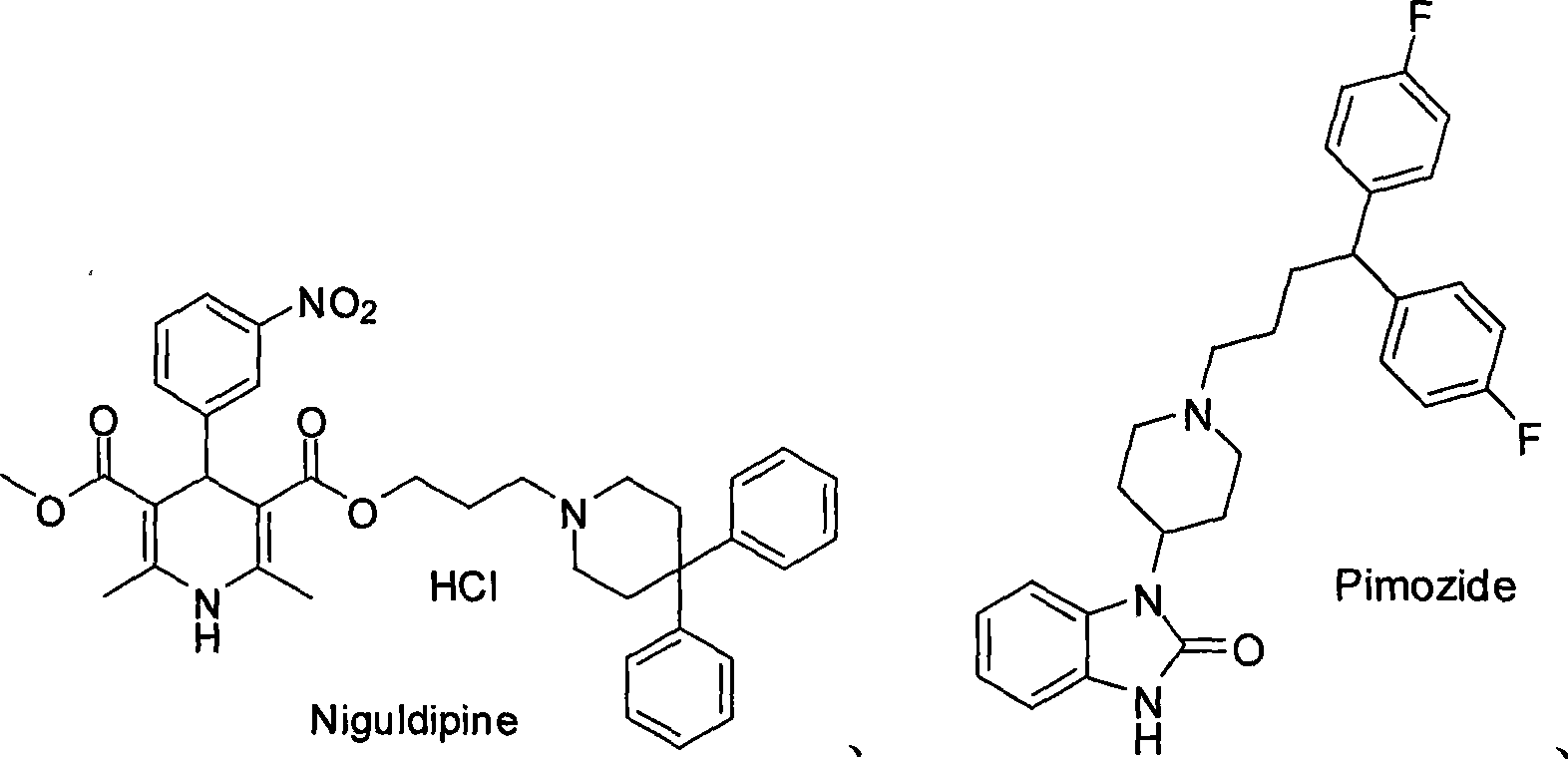Medicine for inducing autophagy and treating disease caused by wrong unfolded protein aggregation, and filtration method thereof
A misfolded protein and autophagy technology, which is applied in the field of drugs and their screening for treating diseases caused by misfolded protein aggregation by inducing autophagy
- Summary
- Abstract
- Description
- Claims
- Application Information
AI Technical Summary
Problems solved by technology
Method used
Image
Examples
Embodiment 1
[0037] Example 1 Compounds increase the expression and aggregation of LC3-GFP
[0038] experiment method:
[0039] Microtubule-associated protein light chain 3 (LC3) is a mammalian protein homologue of yeast autophagy protein ATG8 (Aut7 / Apg8), localized on the surface of preautophagic vacuoles and autophagic vacuoles, and is a widely used autophagosome membrane Labeling (Mizushima N. Int J Biochem Cell Biol 2004; 36: 2491-502). The present invention uses a high-content microscope to analyze and count the changes in the fluorescence intensity and distribution of the green fluorescent (GFP)-labeled autophagosome marker LC3 before and after the action of the compound
[0040]Specific method: The fusion protein LC3-GFP was transferred into H4 cells, and the H4-LC3 cell line was constructed and screened as a screening platform for high-content screening of 480 compounds with known biological activity (ICCB known bioactive library, BIOMOL). Method: The compound was diluted and dis...
Embodiment 2
[0047] Example 2 Compounds increase or do not affect intracellular PI(3)P levels
[0048] experiment method:
[0049] Type III PI3K vps34 is a multifunctional protein that, on the one hand, catalyzes the phosphorylation of PI to generate PI(3)P, which is critical for endocytosis and autophagosomal membrane trafficking (14). At the same time, the complex formed by Vps34 / beclin1 is involved in the regulation of autophagy initiation signal (15). Therefore, PtdIns(3)P levels should at least not decrease too much during autophagy. The FYVE domain is a protein domain consisting of ~70 amino acid residues and containing a zinc finger protein structure, which can specifically bind to PI(3)P(16). Usually, PI(3)P recruits proteins containing the FYVE domain to bind to Organelle membrane, involved in processes such as protein transport. Therefore, fluorescently labeled FYVE domains can be used to detect intracellular PtI(3)P levels and localization (17). We transferred the fusion pro...
Embodiment 3
[0056] Example 3 Eight kinds of compounds increase the degradation of long-lived proteins
[0057] experiment method
[0058] The essence of the autophagy process is a protein degradation process, which mainly mediates the degradation of organelles and intracellular long-lived proteins (5). Therefore, detecting whether a compound promotes the degradation of long-lived proteins in cells is an important evidence that the compound induces autophagy.
[0059] Specific method: the compound was diluted and dissolved in DMSO to prepare different concentrations, and each concentration was repeated three times; H4 cells were planted in a 96-well plate at an appropriate density, and treated with the compound for 2, 4, and 24 hours respectively. The following experimental groups were set up: blank control (DMSO treatment), positive control (inducer rapamycin treatment), and experimental group (compound treatment). One day before the experiment, the cells were planted in a 12-well plate...
PUM
 Login to View More
Login to View More Abstract
Description
Claims
Application Information
 Login to View More
Login to View More - R&D
- Intellectual Property
- Life Sciences
- Materials
- Tech Scout
- Unparalleled Data Quality
- Higher Quality Content
- 60% Fewer Hallucinations
Browse by: Latest US Patents, China's latest patents, Technical Efficacy Thesaurus, Application Domain, Technology Topic, Popular Technical Reports.
© 2025 PatSnap. All rights reserved.Legal|Privacy policy|Modern Slavery Act Transparency Statement|Sitemap|About US| Contact US: help@patsnap.com



